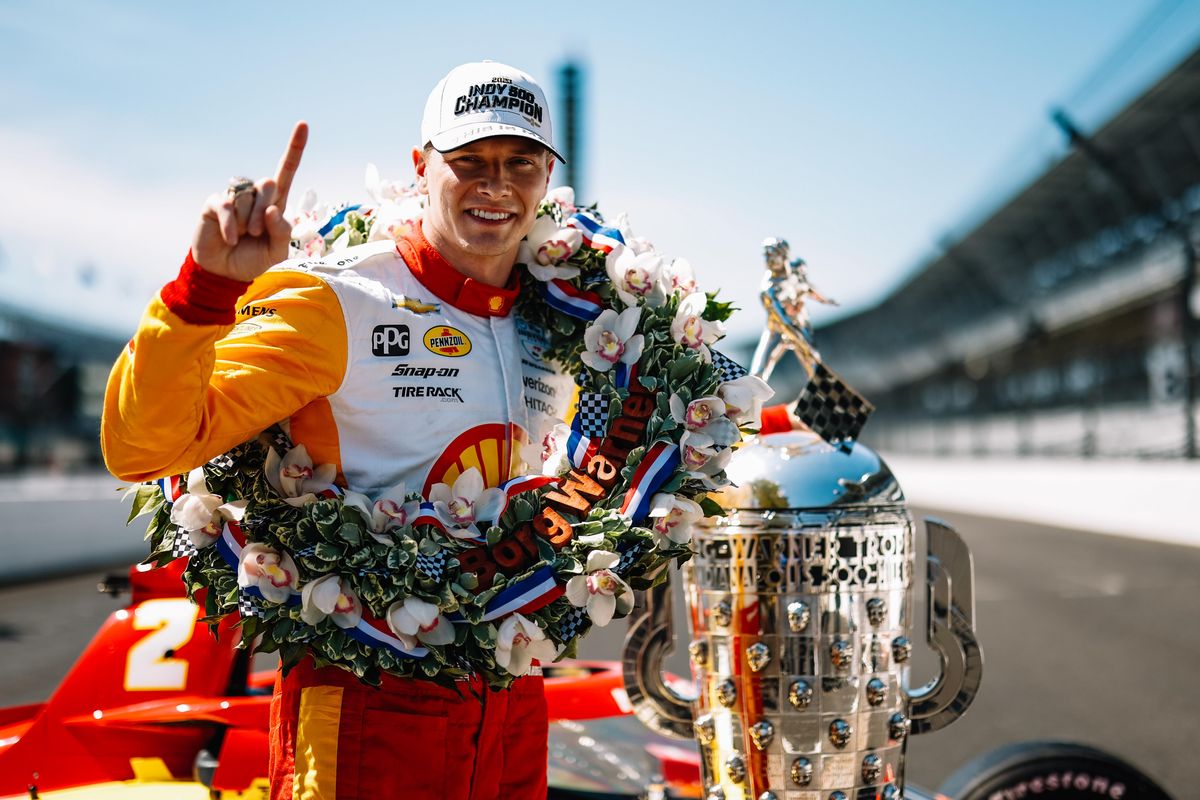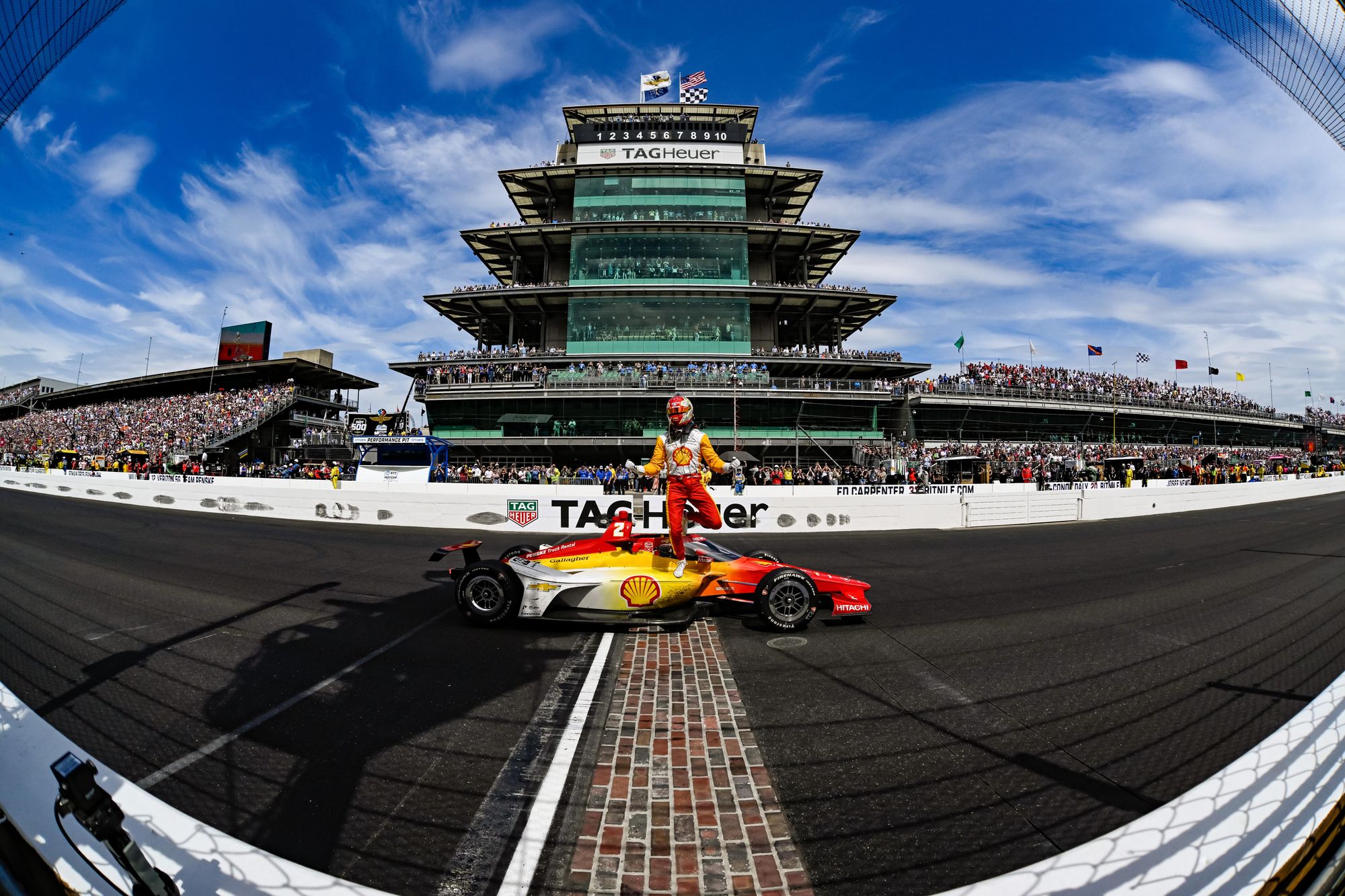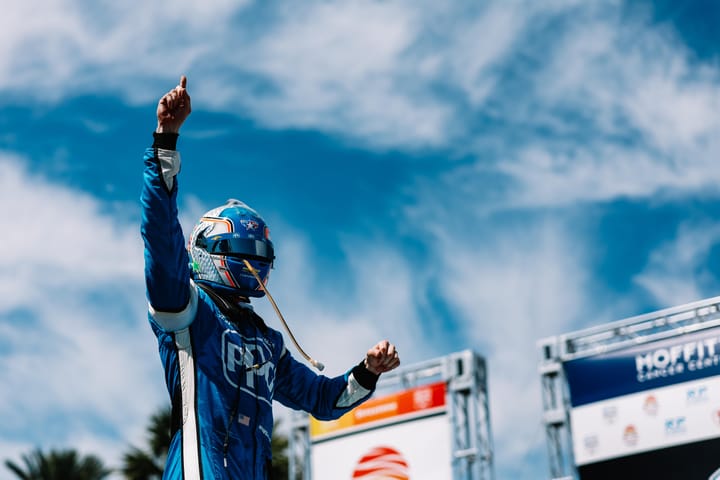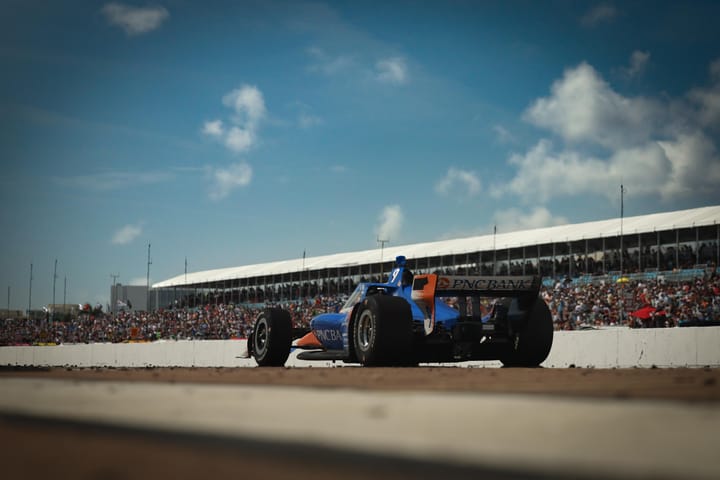Josef Newgarden drinks milk, relief with Indy 500 triumph
Josef Newgarden felt the pressure of success without an #Indy500 win for 11 years. On Sunday, he popped open the ice cold milk in victory lane and felt, more than anything, relief.

Josef Newgarden's career was not a failure at 3:42 p.m. on Sunday, May 28, 2023.
Some may not view his career as a success until approximately 3:43 p.m., but he is not a failure.
As of 3:42 p.m., he's a two-time NTT IndyCar Series champion, 26-time race winner, hasn't finished worse than fifth in the championship standings since 2015, and achieved all of that at 32 years old. He's in the prime of his racing career, driving for the most successful team in the sport, and one of the stars of American motorsports.
Something about IndyCar racing though means winning at Indianapolis vaults you into the stratosphere, though, and Newgarden hasn't won yet.
You are revered around the world if you can win the Greatest Spectacle in Racing. If you won 90 races and couldn't win the 500, you would be looked at with admiration, but a tier below Foyt, Unser, Mears, Castroneves and everyone else who completes 500 miles first at Indianapolis every year.
The more you come back and have your heart broken, the more pressure, fear, worry and everything else that comes with it seeps in.
At 12:45, Newgarden started the first lap of his 12th Indianapolis 500. In the previous 11 he finished everywhere from 30th to 3rd, placing in the top five three times. He's had good cars, good drives and good finishes, but the one that means the most hadn't been his.
Al Unser Jr. said after he won in 1992, "you just don't know what Indy means."
Son of a four-time 500 winner, Unser Jr. was expected to reach the same heights. In 1990 he won the series championship. Heading into the 1992 race, he'd won 17 career IndyCar races and finished in the 500 top five five times, including 1989, where he crashed from the battle for the lead on the last lap to finish second.
He beat Scott Goodyear to the line in what's still the closest finish in 500 history in 1992, and suddenly Unser Jr.'s career felt different. He wasn't a failure, but everything felt different after he won this race.
Sometime between 3:42 and 3:43 p.m., Josef Newgarden — running second on the last lap — used all the skills he learned in his life of motorsport to get past the defending winner, Marcus Ericsson, and defended the lead all the way to the famous yard of bricks. After 12 tries, Newgarden won the Indianapolis 500 by less than a second.
Sometime around 4:00, he'll say he's emotionally drained over the IMS public address system during his victory lap. That's because all of the emotions he showed after the race came flying out like a man who's been told he'll live forever. And now he will.
Joy, pride, excitement, and perhaps most paramount, relief, come flying out as he leapt from his No. 2 Shell Chevrolet, and he flew under the fence and into the crowd to make even his celebration one for the history books.
He'll even say he was emotional starting around 3:15, the last 15 laps, knowing that running in the top three at Indianapolis with a car that can win doesn't happen very often. Three red flags in the last 20 laps to stop and think about it all didn't help with the mounting pressure.
It's all relief now though. Josef Newgarden is forever an Indianapolis 500 winner. What some call IndyCar's golden boy will have his face captured in silver on the Borg Warner trophy forever.
"To win this race is indescribable," Newgarden said postrace. "I think being at this event is indescribable. Someone has to come and see it and be a part of it to understand what it is really all about, and I've always wanted the honor to win this race because I wanted to go in the crowd if it was ever possible because I know what the energy is like here in Indianapolis.
"I'm a little out of words. I apologize that I'm running out of steam here. It's been a lot."
Newgarden shouldn't see his pre-500 win career as a failure, but admitted sometime after 5:00 that it's difficult to not let those thoughts seep in.
"I don't necessarily subscribe to the fact that if you don't win the 500 your career is a failure," Newgarden said, "but I think a lot of people really view this race and this championship with that lens, that the 500 stands alone, and that if you're not able to capture one, then the career really is a failure in a lot of ways."
"I'm going to be honest, I don't feel different — the only thing I feel is the weight of what everyone else wants to put on you because they think the Indy 500 has to be won. I think about all the drivers that probably should have won this race that never won it, and it doesn't make a difference whether they won it or not.
"Their career is still fantastic. It's more just a shame that it didn't work out for them. That's really how I feel about the event. I'm not here to take anything away from it, but I don't like looping it into the category that you have to have it to be complete. I don't feel differently as a driver because today happened, I just feel less weight."
That's what his 500 meant. His leap into the crowd, his long sip of milk, his struggle with the winner's wreath, his ride around the track with his wife, child, team boss and the series owner to thousands of the 330,000 people who stayed to see him one last time that day: relief.

Newgarden's victory capped a wild race that included three red flags for crashes, a harrowing near-miss and an officiating controversy.
The first 90 laps of the race flew by, with leaders Alex Palou, the pole sitter, and Rinus Veekay swapping the lead, and Felix Rosenqvist not too far behind. Sting Ray Robb crashed in turn one on lap 92 to bring out the first caution, during which Palou and VeeKay collided on pit road. Palou needed a new front wing, and VeeKay received a drive through penalty. Palou drove back through the field to finish fourth, but it was effectively the end of both of their race hopes.
Romain Grosjean brought out the second caution after crashing out in turn two, nearly identical to the incident that ended his race last year. After the caution, which saw some contenders like Pato O'Ward pit for fuel and tires, and others like Newgarden, Ericsson and Rosenqvist stay out on track, a split strategy race to the end was developing.
Cars swapped the lead throughout the next stint, including Newgarden, Ericsson, Santino Ferrucci and O'Ward.
The first red flag occurred after Newgarden completed a pass on Felix Rosenqvist entering turn one on lap 185. Rosenqvist got caught in the aero wash behind Newgarden's car, hitting the wall on the exit of turn one and drifting down the track. His car spun, clipping the rear of Kyle Kirkwood — who had been charging to the front.
Kirkwood flipped, heading cockpit down toward the wall. He later stepped out of the car miraculously unharmed, but the same cannot be said for Snowball, a white Chevy Cruze parked outside the track struck by Kirkwood's rear tire. The tire was sheared off in the crash and narrowly missed both the near-record crowd filling the turn two grandstands and the wealthy suites positioned on the exit of the corner.
Racing went back to green, then immediately back to red when O'Ward dove for second place under Ericsson, who gave O'Ward very little room on the inside of turn three. O'Ward made contact with Ericsson, but spun out from inside and careened into the outside wall. Two other cars driven by Agustin Canapino and Simon Pagenaud were involved in the incidents, but all drivers were unharmed.
O'Ward alleged the move was dirty, and said "next time he's coming with me" when asked about the incident.
The final red flag set up the one lap sprint to the finish. During the restart for the second, multiple cars came together on the frontstretch as the leaders crossed the start finish line, including Marco Andretti, Ed Carpenter and rookie of the year Benjamin Pederson.
The final red flag was controversial. Marcus Ericsson, who was leading the race at the time of caution, claimed foul play after the race for the ensuing one lap sprint finish. After the race, he called the decision "unfair," and said the race simply should have finished under caution. Additionally, the practice of exiting pit lane from a red flag and immediately taking the green flag is rare, and has never been done at the Indianapolis 500.
Newgarden, Ferrucci — who was moved back from second to third after reviewing running positions during the red flag, and Tony Kanaan, running his final 500, said the decision was justified, and allowed the race to finish under the green flag — preventing the criticism of the race finishing under caution.
Newgarden's triumph on the restart waited until the backstretch. Ericsson tried his "Dragon" move, weaving from inside to outside trying to break the draft of the cars behind, but Newgarden craftily waited through the frontstretch, closed the gap through turns one and two, and drove to Ericsson's outside into turn three to take the lead for good.
Newgarden went shockingly close to the inside wall at the exit of turn four, coming close the the wall at pit entry, but did enough. He crossed the line first, followed by Ericsson, Ferrucci, Palou, and Alexander Rossi.
Newgarden wouldn't change a thing.
"There's so many different ways that this could have played out and you could have said this is fair or that's fair," Newgarden said. "I've seen it all. At this point I'm just really thankful they did it the way they did. I'm glad I had the car. I don't really care. I've seen a lot of situations where it didn't go our way. Today went our way, and I'll take it. I'll take it all day."




Comments ()